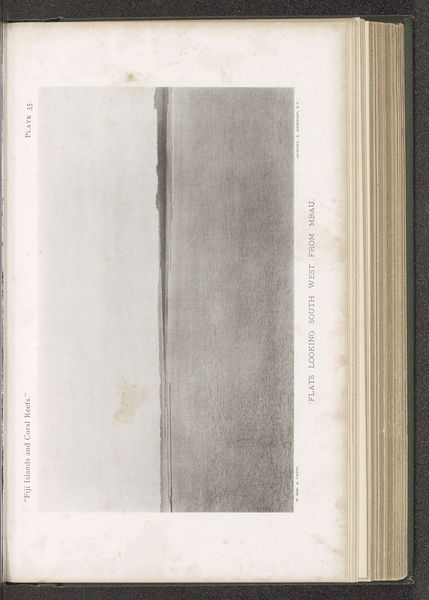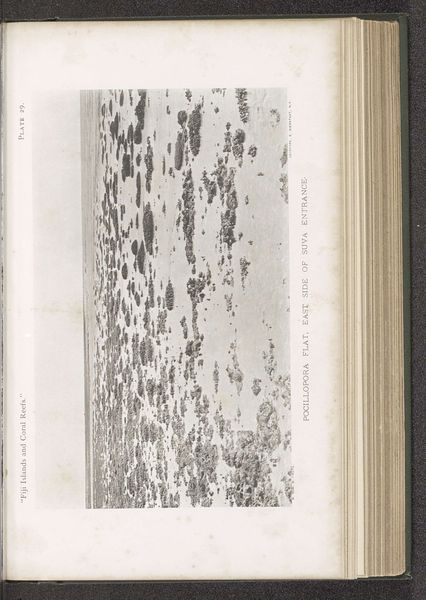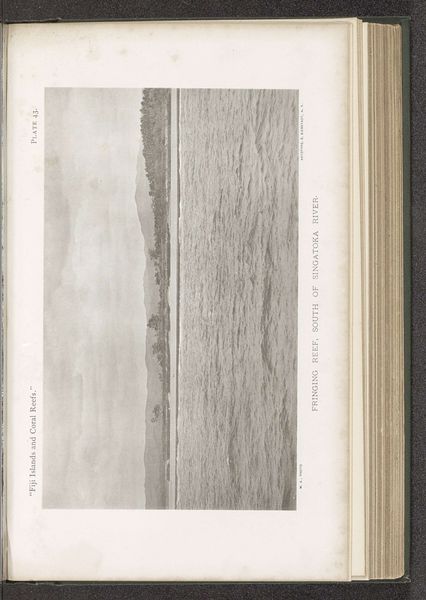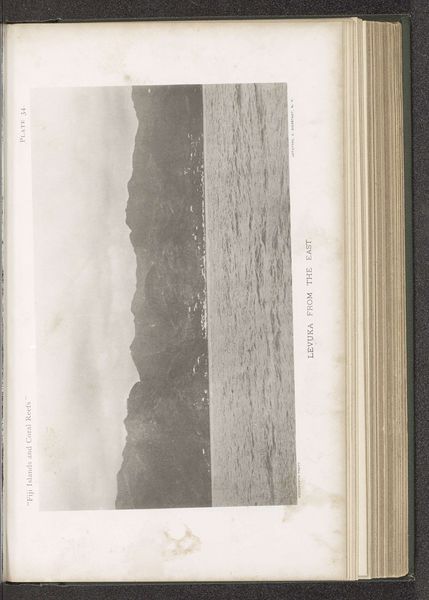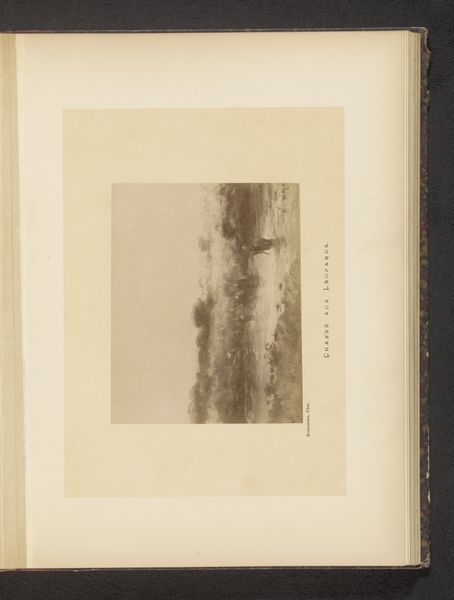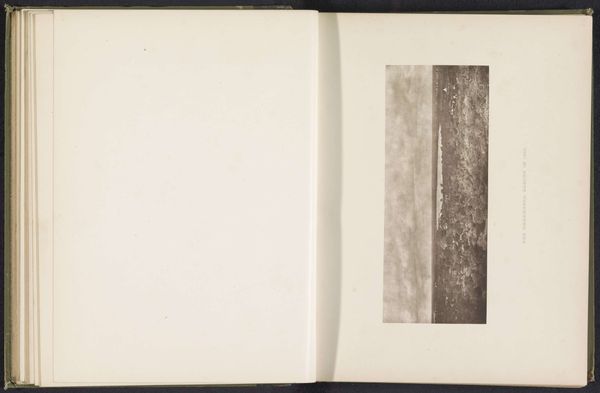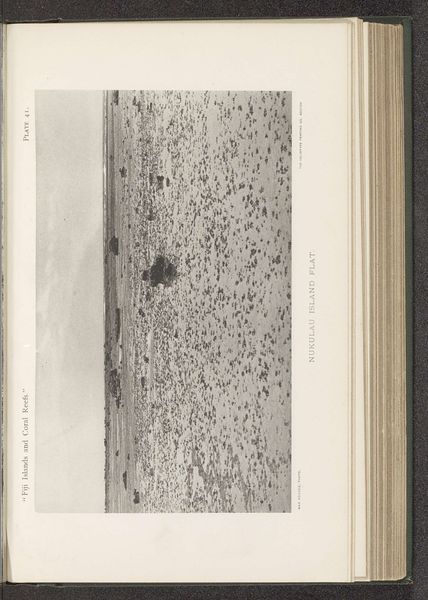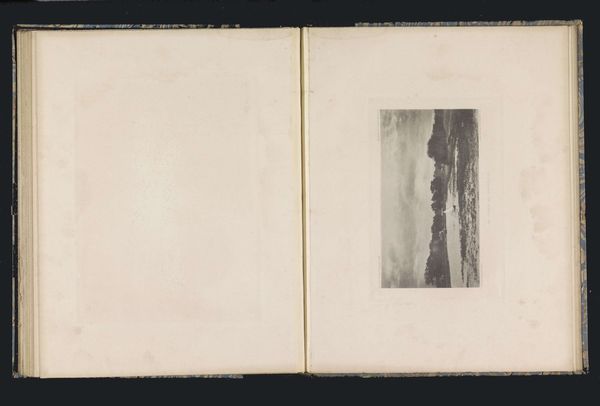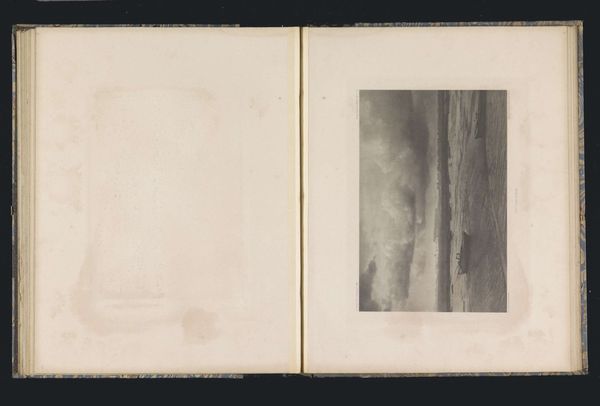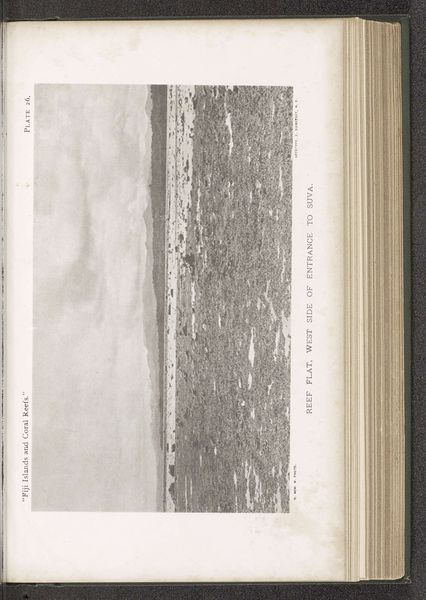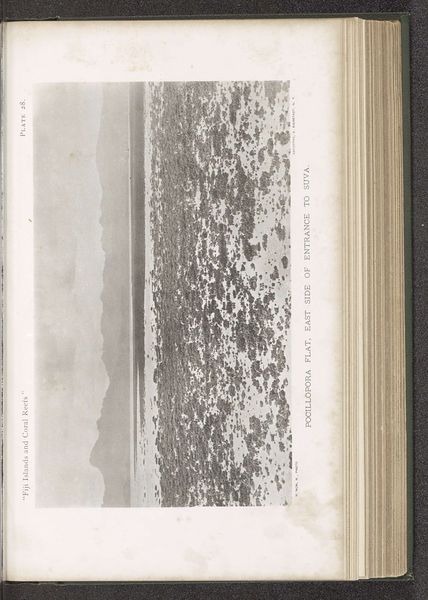
photography, gelatin-silver-print
#
landscape
#
photography
#
ocean
#
gelatin-silver-print
#
realism
Dimensions: height 108 mm, width 179 mm
Copyright: Rijks Museum: Open Domain
Curator: This gelatin-silver print, entitled "Gezicht op het Nasilai koraalrif met in de verte een vuurtoren" - that's "View of the Nasilai Coral Reef with a Lighthouse in the Distance" - was created by W. McM. Woodworth sometime before 1899. What strikes you most about it? Editor: The starkness, definitely. It's almost unsettling, this monochrome rendering of such a vibrant natural environment. You feel the immensity of the ocean but also the rigid discipline inherent in this photographic technique. Curator: Right. Think about the resources required for early photography – the processing of silver, the specialized lenses, the darkroom itself. This image, originally part of an album, speaks to a very specific colonial project: the documentation, classification, and ultimately the appropriation of Fijian landscapes and resources. Editor: Precisely! And consider how photography in this period functioned almost as a form of visual surveying. This isn't just a landscape; it's a record, perhaps even evidence for resource extraction, for scientific study driven by colonial ambition. Where would photographs such as this one been displayed? In government buildings? Ethnographic displays in Western museums? Curator: Good questions. Its formal realism is crucial, though. It isn’t painting meant for salons, and this adds weight to its role in knowledge dissemination – perhaps even aimed at shaping public perceptions. Think about the materiality of a gelatin-silver print. Its glossy surface allowed for incredible detail, yet it’s a detail controlled by the photographic process. It presents an "objective" view, which in reality is shaped by the labor of its making and use in that moment. Editor: I see what you mean. There's also the cultural context. Who was the intended audience? Were there Fijians involved in the making of these images, in the production chain of this landscape view? If so, were they acknowledged or credited? These are crucial aspects of looking at it through a historical and political lens. It is never just an image of the sea and coral reef. Curator: Absolutely. What a powerful reminder that seemingly objective depictions can often mask complex social and economic narratives, leaving lasting marks on both land and the image. Editor: Yes, understanding that context reshapes how we understand it, highlighting the historical systems of labor and perception involved in capturing this seemingly still moment.
Comments
No comments
Be the first to comment and join the conversation on the ultimate creative platform.

